
Exhibitions: Current | Upcoming | Past
Exhibitions: Past
Locker Room Culture
Strategy, Play, and Commentary in Sports and Art
An Exhibition Curated by Glenn Lavertu
March 5 – April 3, 2015

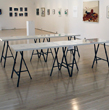
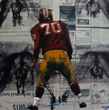
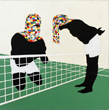
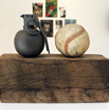
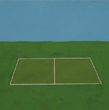

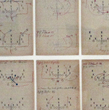
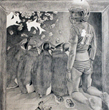
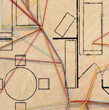
This exhibition was produced by the gallery as part of its ongoing Visiting Curator Series.
Locker Room Culture (Strategy, Play, and Commentary in Sports and Art) was curated by Glenn LaVertu. The exhibition further explores the concepts first presented by LaVertu in a lecture called More Brains Than Brawn (the Design of Sports Strategy and of Game-Playing in Art), at a forum called Sports + Art, held by Communitas: Salon and Creative Think Tank, in New York City at Dixon Place, in March 2014.
In this expansive project on view in the gallery, LaVertu's objectives are threefold – to make comparisons between the strategic practices intrinsic to sports and art; how artists use sport in order to confront other areas of our culture; and to make the argument that all sports can be seen as legitimate art forms unto themselves.
Some of you may remember Glenn through his work with students in the Art and Design Programs at the college. Glenn taught at BCC for several years and his enthusiasm in the classroom was contagious. He brought course material alive, rather than lecturing from a podium, he prompted, engaged, and invited students to get out of their chairs and actively participate in the learning process. He brings that same enthusiasm to this project and it has been a delight to work him.
Glenn LaVertu is currently an adjunct professor at Parson's the New School for Design, where he teaches courses in Drawing, Illustration and Animation, for the School of Design Strategies and Art, Media and Technology departments. He has been an instructor at Brown University, the Rhode Island School of Design, and Bristol Community College, teaching subjects from sculpture and drawing to art history. His work has been exhibited throughout the United States, and, recently, in Europe.
Kathleen Hancock
Director
Introduction
The thoughts and images that are conjured up in a phrase such as Locker Room Culture tend to be of sweaty, smelly, and chauvinistic misbehaviors found in the locker rooms of sports facilities, often with the aid of a towel or champagne. Instead I use this title to talk about a different kind of behind-the-scene culture altogether — one involving the mind. The aim of this exhibition is threefold:
- To make comparisons between the strategic practice found in both sports and art.
- To describe how art uses sport as subject in a manner that is not traditional illustration, in order to confront and comment on other areas of our culture.
- To make the argument that the aesthetics of strategy and play, rather than obvious physical grace (or lack thereof) can legitimize the notion that sports are another art form.
Strategy
In the arts there is a philosophical component called aesthetics or aesthetic theory that concerns itself with analyzing issues of sensory experiences for purposes of assigning judgment and taste. Descriptions of beauty, ugliness, meaning, and form are central to the dialog. As of late, ideas surrounding the non-aesthetic or anti-aesthetic in art have surfaced helping to usher in the world of conceptual art forms. These aesthetic descriptions and theories, as they are now applied to the conceptual realms of the arts, must in turn, be applied to the less-considered conceptual aspects of sports. While the aim of sports differs from art there is nonetheless, an artistry in the designed stratagems — from coaches and athletes, the process of carrying them out through play, and the various forms these take within the given framework of rules and spatial parameters of the game.
Play
Just as the making of an art object is dependent upon the idea, the play on the field is dependent upon the strategy. This means when Johan Huizinga, the great philosopher on sports and play, wrote in his Homo Ludens (1938) of art as dependent upon the "creative impulse" and is "always subjected to the skill and proficiency of the forming hand" he is incorrect, for there is an equivalence between the play in sports and the processes of the visual arts. Jackson Pollock may look like he is acting purely on intuition, but there is a guiding principle, an idea at work, just as a pass from Joe Namath may look like impulse, but it is the enactment of an idea, a strategy. There is no difference between the processes of a coach's thinking, the athlete's performance, and the artist's own rules and actions in the studio.
Commentary
I discovered in assembling this exhibition it was easier to find artists whose work tackled issues related to sports, either directly or tangentially, than to find work that made juxtapositions between the strategic in sports and in art. Therefore, I thought it prudent to include this aspect in the exhibition. I feel it is necessary to make some mention of the relation of sports and art to social commentary, and to make clear that this is not illustration, that the collision of sports and art can also be expressions of social commentary, and not just about the depiction of athletes in motion.

